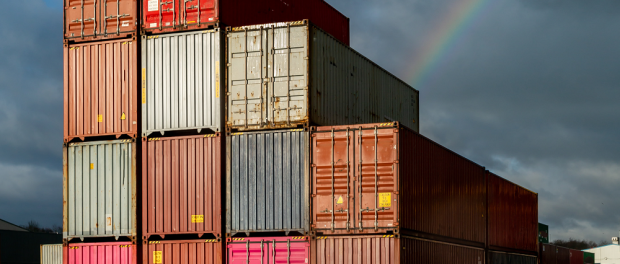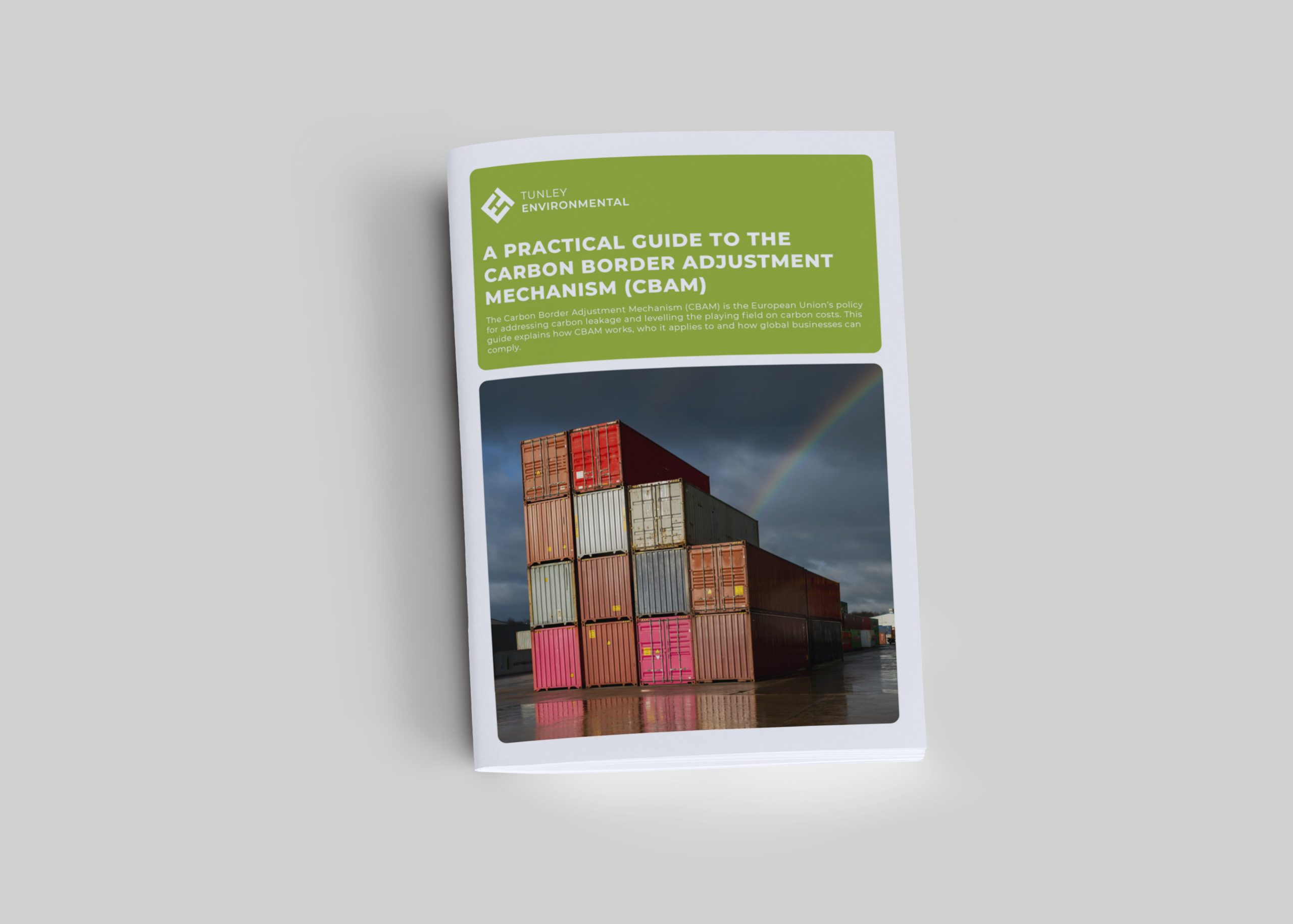How to Prepare Your Carbon Data for CBAM Compliance

By Dr Alejandra Zazueta Lopez, Biodiversity Scientist, BSc, PhD, Tunley Environmental
The Carbon Border Adjustment Mechanism (CBAM) is the European Union’s landmark policy to prevent carbon leakage and promote global decarbonisation. As the EU tightens its climate goals under the European Green Deal, CBAM aims to ensuring that imported goods are subject to the same carbon costs as those produced within the EU.
If you’re a business importing certain carbon-intensive goods into the EU such as steel, aluminium, cement, fertilisers, hydrogen, or electricity, you are now subject to CBAM reporting requirements. The transitional phase of CBAM began in October 2023, requiring importers to submit quarterly reports on the embedded emissions of covered goods. By 2026, full compliance will be enforced, including the purchasing of CBAM certificates based on verified emissions.
As companies gear up for this new regulatory landscape, accurate and high-quality carbon data is essential. Here’s a clear guide to help your organisation collect high quality data for CBAM compliance.
Step 1: Understand Your CBAM Obligations
Before diving into data preparation, it is important to determine whether your company is subject to CBAM and what goods you import fall under the scope. During the transitional phase, importers must submit CBAM reports every quarter via the EU’s CBAM Transitional Registry.
Each report must include:
- Total embedded emissions (both direct and indirect) per tonne of imported product.
- Production site details of non-EU suppliers.
- Methodologies used to calculate emissions.
- Verification status (verification is optional in the transitional phase but required later).
Knowing exactly what to report and by when helps you prioritise data collection and supplier engagement.
Step 2: Map Your Supply Chain
CBAM focuses not just on the final imported goods, but on how and where they were produced. Start by mapping your supply chain for all products within the CBAM scope. This includes:
- Identifying non-EU suppliers and production facilities.
- Understanding the production processes involved (especially energy-intensive steps).
- Collecting supplier contact information and establishing communication channels.
This mapping exercise is the foundation for gathering reliable primary data from your suppliers, which is preferred over using default values.
Step 3: Collect Primary Emissions Data
Primary data is key for CBAM compliance. You should aim to collect actual emissions data from suppliers, including:
- Direct emissions from production (e.g. combustion of fossil fuels on-site).
- Indirect emissions from electricity consumption (based on the regional or national grid mix).
Data collection from your suppliers is one of the biggest challenges and probably the most time-consuming task for CBAM declaration. Creating a strong communication channel with your suppliers is essential to reduce uncertainties and avoid last minute hassles. When requesting data, ensure suppliers are aware of the EU-approved calculation methods, such as those in the EU’s CBAM Implementing Regulation or ISO standards. Encourage them to maintain documentation and logs to support future audits.
Step 4: Apply the Correct Methodology
CBAM requires that emissions be calculated using specific methodologies. These should:
- Align with EU guidance (e.g. EU ETS Monitoring and Reporting Regulation).
- Include all relevant emission sources and account for carbon content in raw materials where applicable.
- Distinguish between direct and indirect emissions clearly.
Use the official CBAM communication templates and tools where possible. These are designed to help importers ensure consistency and comparability across submissions.
Some businesses may choose to use Life Cycle Assessment (LCA) or carbon accounting data, to accurately report their emissions and identify potential reduction opportunities when possible.
Step 5: Prepare for Verification (Even During the Transitional Phase)
Although third-party verification is not mandatory during the transitional phase (2023–2025), preparing your data as if it were being audited is a smart move.
To do this:
- Keep source documents from suppliers (e.g. meter readings, fuel receipts).
- Record calculation steps and assumptions clearly.
- Organise your data in a format that can be easily reviewed and checked.
From 2026 onwards, emissions data must be verified by an accredited verifier. Starting early helps build confidence in your processes and avoid future penalties.
Step 6: Create an Internal CBAM Reporting System
Consistency and accuracy in reporting will require internal systems that support:
- Quarterly data collection and aggregation.
- Data validation workflows.
- Version control and audit trails.
If your company already reports emissions under frameworks like Carbon Disclosure Project (CDP), Greenhouse Gas (GHG) Protocol, or European Union Emissions Trading System (EU ETS), you may be able to adapt these systems. However, CBAM’s focus on product-level emissions and import volumes means new processes and coordination with procurement teams will be needed.
CBAM marks a fundamental shift in how international trade interacts with climate policy. While the compliance requirements may seem complex, they also present an opportunity for businesses to gain better visibility into their supply chains and take a proactive role in carbon emissions reduction strategies. By implementing sustainable practices along their supply chain, businesses can become more resilient to carbon border taxes.
By starting early, building strong data quality practices, and fostering transparent supplier relationships, your organisation can not only meet CBAM audit requirements but also position itself as a leader in sustainable trade. CBAM represents an innovative opportunity to work towards decarbonisation, by a joint effort with businesses and their international suppliers it is possible to make an important positive impact into climate change mitigation.
At Tunley Environmental we help organisations to be prepared and verify their carbon data is ready for CBAM compliance as well as understanding their supply chain and identify opportunities for carbon emission reductions. We tailor our PhD-level advice to your organisation, simplifying the process for data collection and verification of data quality.



